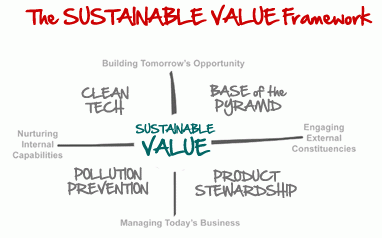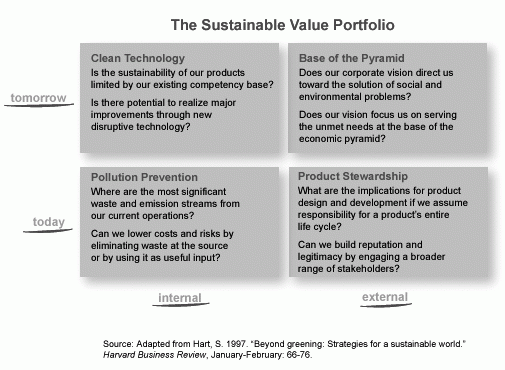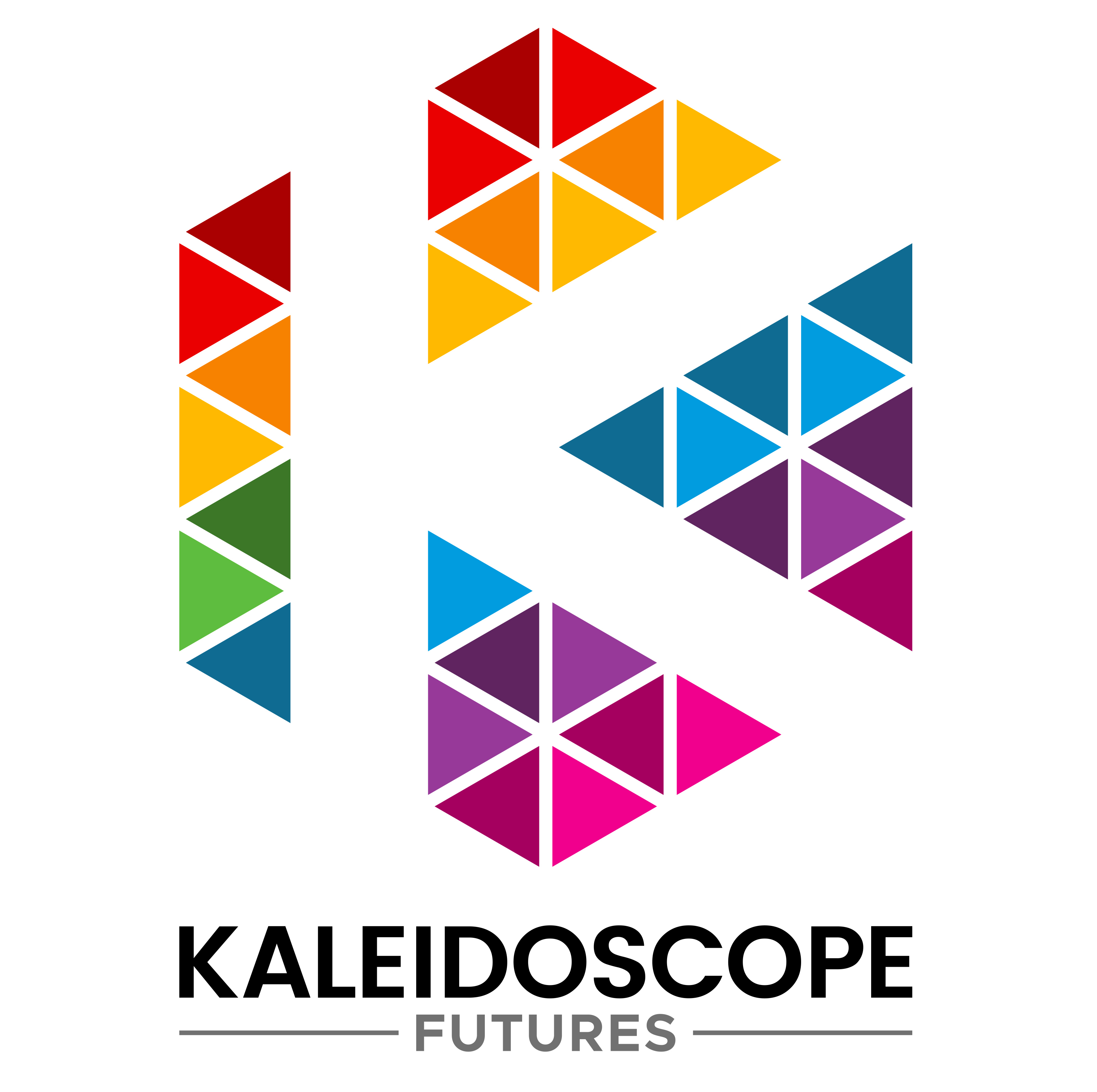Understanding Sustainable Value
The Evolution of Value Series - Part 8, by Wayne Visser
“Just as the creation of shareholder value requires performance on multiple dimensions, sustainable development is also a multidimensional challenge." These words by Prof. Stuart Hart and Mark Milstein underscore their sustainable value framework.[i] "Yet," they continue, "most managers frame sustainability not as a multidimensional opportunity, but rather as a one-dimensional nuisance.”
The idea of sustainable value, therefore, is to show how “the multiple challenges associated with global sustainability, seen through the appropriate business lenses, can help to identify strategies and practices which improve performance in all four quadrants of the shareholder-value framework. This, in turn, facilitates the creation of sustainable value for the firm.”
Interestingly, they begin by looking at the basic components of shareholder value, which they illustrate through a matrix with four quadrants. The two axes represent time (today versus tomorrow, i.e. the short-term versus the long term) and place (internal versus external, i.e. within the firm versus beyond the firm). This results in four distinct dimensions of performance crucial to generating shareholder value: cost and risk reduction (today, internal); reputation and legitimacy (today, external); innovation and repositioning (tomorrow, internal); and growth path and trajectory (tomorrow, external).
Hart and Milstein use the same axes as their shareholder value matrix (today-tomorrow, internal-external) to create a sustainable value matrix. By making innovation both socially inclusive and environmentally sustainable, they argue that significant business and societal value will be created. Hence, the first dimension (today, internal), driven by trends in pollution, consumption and waste, advocates the strategy of pollution prevention, by minimising waste and emissions from current facilities and operations, which in turn will reduce cost and risk.
The second strategy (today, external) is driven by civil society, transparency and connectivity. The focus is product stewardship, by engaging stakeholders and managing the full life cycle of today’s products, which will enhance reputation and legitimacy. The third strategy (tomorrow, internal), driven by market disruption, technology trends and the ecological footprint of companies, is clean technology, by developing and deploying next-generation solutions, which will accelerate innovation and repositioning.
The final strategy (tomorrow, external), driven by population changes, poverty and inequality, is called sustainability vision, by creating a shared roadmap for meeting unmet needs, resulting a growth trajectory. This links directly to Hart’s previous work on BOP markets. Hence, sustainable value is created by bringing together BOP market needs with best environmental practices. This resolves two dilemmas. The first is that only the rich can afford to be sustainable, which smacks of elitism, privilege, and even racism. And the second is that, without the billions of poor having access to sustainable options, the world (including the rich countries) will never achieve sustainability anyway.
Turning this sustainable value ideal into practical reality requires what Hart, together with Clayton Christensen, has called “The Great Leap” of driving innovation from the base of the pyramid.[ii] Others have called this “frugal innovation,” a term popularised by Navi Radjou and Jaideep Prabhu.[iii] Some trace the concept back to Mahatma Gandhi’s approach to technology in the 1930s and 1940s; others point to “frugal engineering” that was coined by Carlos Ghosn when he was joint CEO of Renault and Nissan in 2005.
For Radjou and Prabhu, they were looking for a way to describe the kind of “do more with less” innovation that they encountered in India and other emerging markets. When they asked people how they would define this frugal, flexible, inclusive innovation, they would use the Hindi word “jugaad.” The power of Hart and Millstein’s sustainable value concept is that it is not only about economic, social or environmental benefits, but all three simultaneously. When Radjou was asked in an interview how frugal innovation might do the same thing, he gave the following example of how sustainability, frugality and decentralisation work.[iv]
One of the Fab labs in Barcelona decided to look at the issue of pollution in the city. So they conceived, designed and manufactured a device which has two components – one part has sensors which sit outside your window and pick up levels of nitrogen, carbon dioxide, carbon monoxide, noise and sunlight, and the other part fits into your computer so that is where the sensor sends the data through very low-energy, low-frequency radio signals. Now this data is sent through the Internet to a central server where data from other citizens who also have this device can then be processed. This data, which gives us information on the noisier parts of Barcelona or a particularly high level of carbon monoxide in the air, can then be used to lobby with the local government to make a difference.
In all cases, the idea is to creatively simplify and redesign traditionally complex, expensive products to be highly affordable. There are numerous examples, from Limbetless's additive manufacturing personalised bionics and prosthetics, to G.E.’s hand-held ultrasound scanners. What makes sustainable value distinctive from generic frugal innovation is that it adds the environmental dimension. A good example might be the HANS Solar Briefcase and PowerPack, which emerged from billionaire Manoj Bhargava’s Stage 2 Innovations, a $100 million investment fund for sustainable development.
[i] Hart, S.L. & Milstein, M. (2003). Creating sustainable value, Academy of Management Executive, 17(2).
[ii] Hart, S.L. & Christensen, C.M. (2002). The great leap: driving innovation from the base of the global pyramid. MIT Sloan Management Review 44 (1): 51–56.
[iii] Radjou, N. & Prabhu, J. (2015). Frugal innovation: how to do more with less. London: Profile Books.
[iv] Aulbur, W. (2016). In conversation with Navi Radjou and Jaideep Prabhu. Thinkers.in, October 24.



